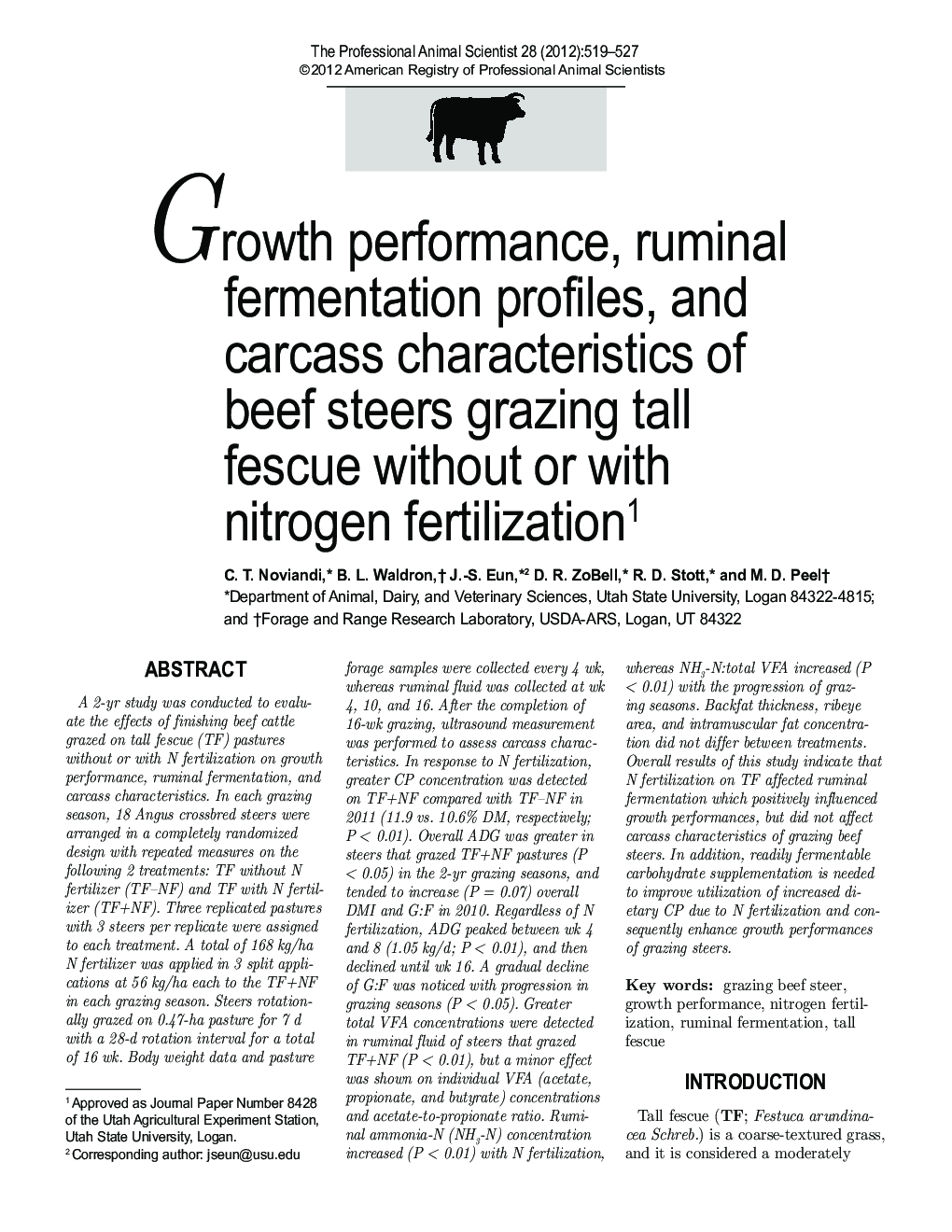| Article ID | Journal | Published Year | Pages | File Type |
|---|---|---|---|---|
| 2453912 | The Professional Animal Scientist | 2012 | 9 Pages |
Abstract
A 2-yr study was conducted to evaluate the effects of finishing beef cattle grazed on tall fescue (TF) pastures without or with N fertilization on growth performance, ruminal fermentation, and carcass characteristics. In each grazing season, 18 Angus crossbred steers were arranged in a completely randomized design with repeated measures on the following 2 treatments: TF without N fertilizer (TF-NF) and TF with N fertilizer (TF+NF). Three replicated pastures with 3 steers per replicate were assigned to each treatment. A total of 168 kg/ha N fertilizer was applied in 3 split applications at 56 kg/ha each to the TF+NF in each grazing season. Steers rotationally grazed on 0.47-ha pasture for 7 d with a 28-d rotation interval for a total of 16 wk. Body weight data and pasture forage samples were collected every 4 wk, whereas ruminal fluid was collected at wk 4, 10, and 16. After the completion of 16-wk grazing, ultrasound measurement was performed to assess carcass characteristics. In response to N fertilization, greater CP concentration was detected on TF+NF compared with TF-NF in 2011 (11.9 vs. 10.6% DM, respectively; P < 0.01). Overall ADG was greater in steers that grazed TF+NF pastures (P < 0.05) in the 2-yr grazing seasons, and tended to increase (P = 0.07) overall DMI and G:F in 2010. Regardless of N fertilization, ADG peaked between wk 4 and 8 (1.05 kg/d; P < 0.01), and then declined until wk 16. A gradual decline of G:F was noticed with progression in grazing seasons (P < 0.05). Greater total VFA concentrations were detected in ruminal fluid of steers that grazed TF+NF (P < 0.01), but a minor effect was shown on individual VFA (acetate, propionate, and butyrate) concentrations and acetate-to-propionate ratio. Ruminal ammonia-N (NH3-N) concentration increased (P < 0.01) with N fertilization, whereas NH3-N:total VFA increased (P < 0.01) with the progression of grazing seasons. Backfat thickness, ribeye area, and intramuscular fat concentration did not differ between treatments. Overall results of this study indicate that N fertilization on TF affected ruminal fermentation which positively influenced growth performances, but did not affect carcass characteristics of grazing beef steers. In addition, readily fermentable carbohydrate supplementation is needed to improve utilization of increased dietary CP due to N fertilization and consequently enhance growth performances of grazing steers.
Related Topics
Life Sciences
Agricultural and Biological Sciences
Animal Science and Zoology
Authors
C.T. Noviandi, B.L. Waldron, J.-S. Eun, D.R. ZoBell, R.D. Stott, M.D. Peel,
